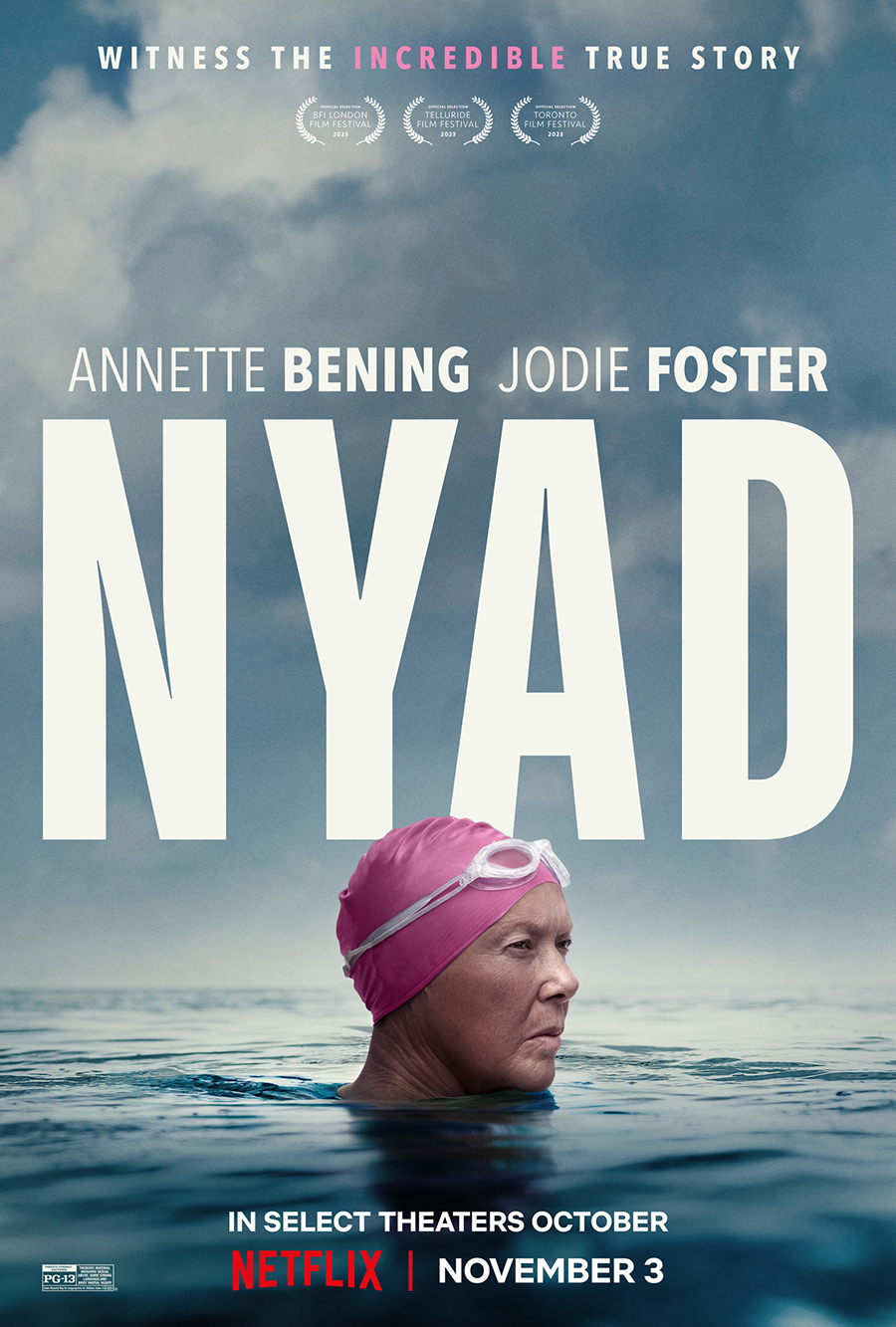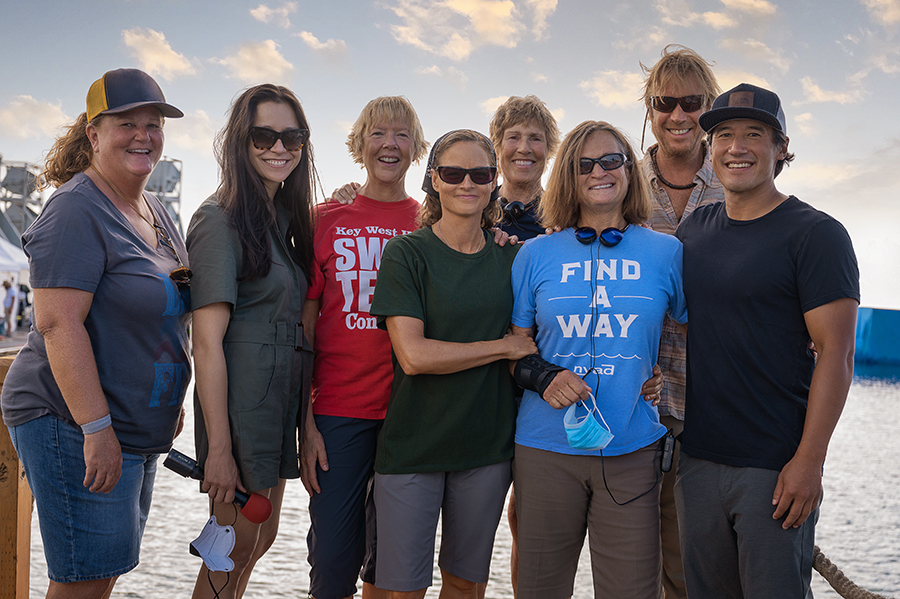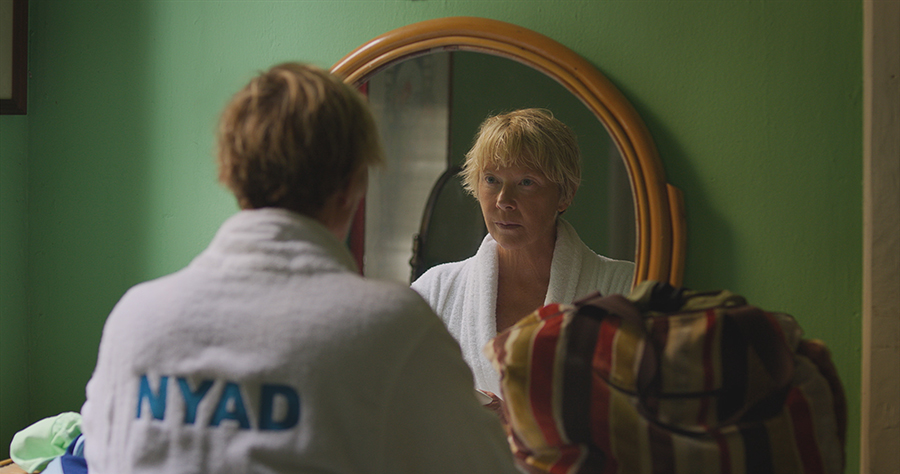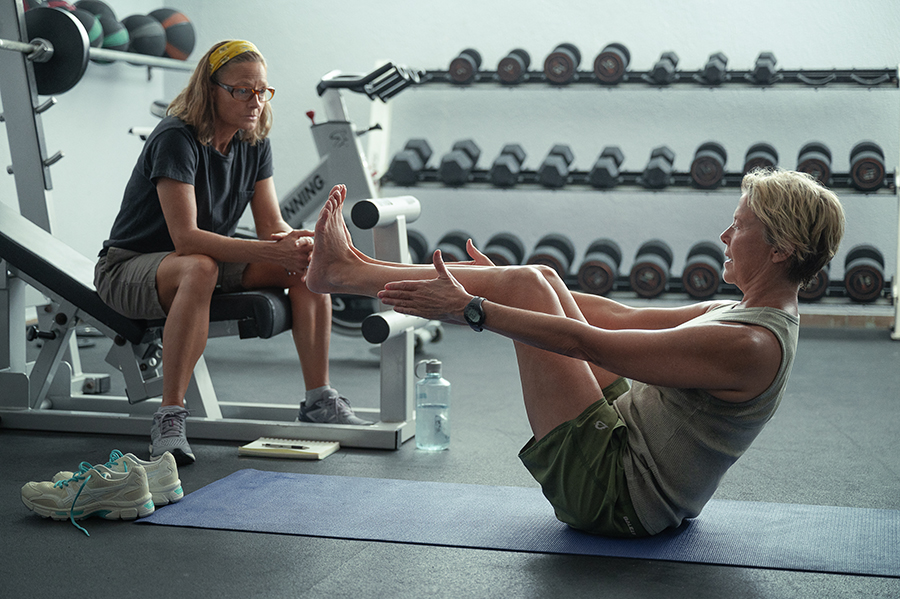‘Nyad’ Director Elizabeth Chai Vasarhelyi: “We Live in a Society That Discards Women After a Certain Age”

Jodie Foster, as Bonnie Stoll, and Annette Bening, as Diana Nyad, in 'Nyad.'. Photo: Kimberley French/Courtesy of Netflix
For Academy Award-winning documentary filmmakers Elizabeth Chai Vasarhelyi and Jimmy Chin, exploring people’s journeys as they strive for the impossible has been a cornerstone of their work.
The married couple previously directed high-stakes documentaries like The Rescue (about the 2018 rescue of a junior soccer team from a Thai cave) and Free Solo (following the first free solo climb of the 3,000-foot tall El Capitan rock formation), the latter earning them an Academy Award for Best Documentary Feature. With their most recent film, Nyad — which also marks Vasarhelyi and Chin’s first narrative feature — they chronicle a real-life story about the power of the human spirit and fulfilling a seemingly impossible dream at age 60.
The film, which made its international première at this year’s TIFF and is currently streaming on Netflix, is the true story of lauded marathon swimmer Diana Nyad (played remarkably by Annette Bening, 65), who was globally recognized for her triumphs in the water in the ’70s. She gave up marathon swimming for a prominent career as a sports journalist in 1978 after a failed attempt at completing the 110-mile trek from Cuba to Florida, which has often been referred to as the “Mount Everest” of swims.
In 2010, as Nyad approaches her milestone 60th birthday, she is invigorated with the idea of coming out of her 30-year retirement and attempting to once again complete the swim. She then embarks on a four-year journey with her best friend and coach, Bonnie Stoll (another impeccable performance by Jodie Foster, 60) in an attempt to conquer the epic feat she fell short of decades earlier.
Nyad’s journey is a true testament to the power of the human spirit at any age and realizing dreams later in life, no matter how impossible they may seem. And the filmmakers and the cast revel in showing Nyad and Stoll in all their complexities.
Bening embraced the role and is seen on screen without any makeup, as the fine camerawork lingers on her authentic features. She began her research by reading Nyad’s 2016 memoir — upon which the film is based — and was even more impressed.
“She is such a well-spoken person and she’s a woman of the world who loves to travel and read and then, at 60, there is this inflection point where she starts to swim again, almost as a secret from herself,” Bening said, according to the press notes distributed before the recent writer’s strike.

As for two-time Oscar winner Foster, she added in the press notes that, “it’s something that we haven’t really seen on screen before, two women of a certain age, who grew up in a pre-feminist time, who were asked to choose in some ways between their goals and their personhood and their identities, and who had to sacrifice some dreams because they didn’t have the same opportunities that men had at that time in their lives.”
For their parts, Vasarhelyi and Chin have long been interested in putting strong, complex, capable women at the centre of their films, and relished the opportunity to dive into this story.
Zoomer spoke with Vasarhelyi to discuss the duo’s first narrative film, working with heavyweights like Bening and Foster, the power of aging and how making this film helped her realize how she too found herself growing as a director in her 40s.

MARRISKA FERNANDES: What is it about the themes in this film that you loved and wanted to explore in the narrative?
Elizabeth Chai Vasarhelyi: So Jimmy and I like stories about ordinary people who push and who challenge … we read the script for Nyad, and we had a moment of like, ‘This woman does exactly that.’ It was also this wonderful opportunity to create two rich roles for spectacular actresses. And that was really exciting.
MF: Did you always want to explore a narrative feature or was it the film that dictated that choice?
EV: I think the form follows function. But I worked for Mike Nichols 20 years ago, after I made my first film, and that was wonderful. This opportunity made sense to make this film this way.
MF: The fact that Diana was invigorated by the idea of trying again, at 60, and failing four times after and yet trying again, was so inspiring. What is it about the power of aging and realizing dreams later in life that you liked exploring?
EV: I just think that we live in a society that discards women after a certain age. I think here was a real life story that can be very inspiring to all of us that with the right team, or the right support, we’re never too old to chase our dreams. And even if it’s outrageous, if you’ve got to grow a little bit on the way … I think Diana woke up at 60 and realized that the world may be done with her, but she’s not done with it yet. And I appreciate that.

MF: What was the joy of telling a compelling character story like this?
EV: I think we don’t see enough stories about women of a certain age in their full complexity. The real Diana Nyad is formidable; she’s one of the most articulate people I know, and she’s a force of nature. But I have to say, there’s a parallel between these athletes and these artists. Like Annette Bening trained for a year for the role. She knew that she had to give it, bring that energy physically and to be prepared. The professionalism of both Jodie and Annette and the amount of hours they put in, the amount of research they did, the amount of preparation, it’s very, very impressive. It’s not dissimilar. I think there’s something nice about that because we are like, ‘Diana swims 110 miles, and so Annette’s in the water still seven hours later. Everyone, we’ve got to have a smile on her face and do a good job.’ So there was a certain respect to the subject matter that inspired I think the whole crew.
MF: Did what Annette brought to the role match what you envisioned when you read the script?
EV: I think it always had to be Annette because we understood she’s a formidable actor, but also she puts in the work. And it was really important for us to cast age appropriately and also, you know, find an actor who felt comfortable in her skin that it was okay to be that age on screen. There are no touchups in the movie. Annette embraced the role wholeheartedly and she also didn’t shy away from playing Diana in her full, complex humanity like being unlikable sometimes, and she understood it. So all I can say is, we’ve never directed actors before and we certainly hit the jackpot. And also, the amount of work that both Jodie and Annette put into prepping in terms of the script, then reading through it, rehearsing it, the standard of play was very high.
MF: I was curious whether Annette and Jodie were getting together and chatting with Diana and Bonnie, and what that conversation was like.
EV: They spent a lot of time together. But Bonnie and Diana didn’t really come to set until the end, because I think that’s also a very important thing that we gave Annette enough space to really inhabit the role and make it her own. I think it was nice that Annette and Jodie would hang out and Bonnie and Diana, often in L.A., while preparing.

MF: I love the intensity that you brought to your documentaries is also evident in the nail-biting moments in this film. What is the key to balancing not just the intensity but also make an entertaining narrative feature?
EV: I feel like all our films do that. It actually felt very familiar, because we were dealing with familiar challenges because [it’s] always about the obstacles that make it fun. You know, swimming is not your most entertaining sport. There’s not even dialogue. But we were used to that because, say, in Free Solo, Alex climbed and climbed and really what we understood in Free Solo was you don’t really need to know the jargon. But you do need to know that challenge … And I think the best example would be … [Diana Nyad] actually found herself 30 years later in exactly the same position when she was failing again, having spent 50 hours in the water. I was interested in the body memory, like, ‘What is her body remembering from that? What memories are drawn from it?’ So then playing with the archive footage gave us an opportunity as that swim is about really coming to terms with the fact that she’s trying to do this 30 years later. Every swim was like an opportunity to do something that advanced the story.
MF: Has having done this film given you a better sense of the goals you have for yourself as a director going forward?
EV: I think what was really fun was to face something like, ‘Who knew that in your 40s you can grow as a director?’ I feel like we’re so comfortable in the non-fiction space. I really delight in the challenges or the problems when we say the problems are what make the film. I didn’t realize that the instincts would translate. And it kind of makes me excited about other really different things that we could do. Like, we had asked Alexandre Desplat to score all of our films. Over and over again he said, ‘No,’ and this time he said, ‘Yes.’ So this was exciting, being able to work at that level creatively, and it kind of opened up these ideas of ‘What else can we do that’s meaningful?’
Nyad is currently streaming on Netflix.
RELATED:
TIFF Preview: 15 Films We Can’t Wait to See at the 2023 Toronto International Film Festival